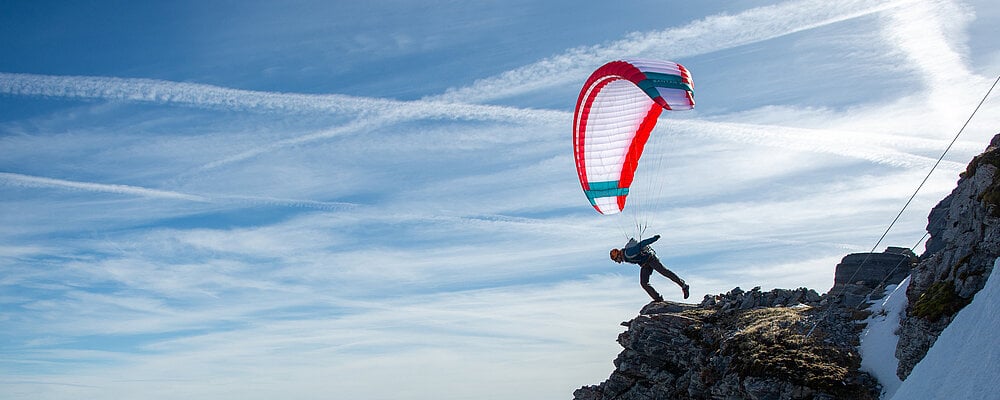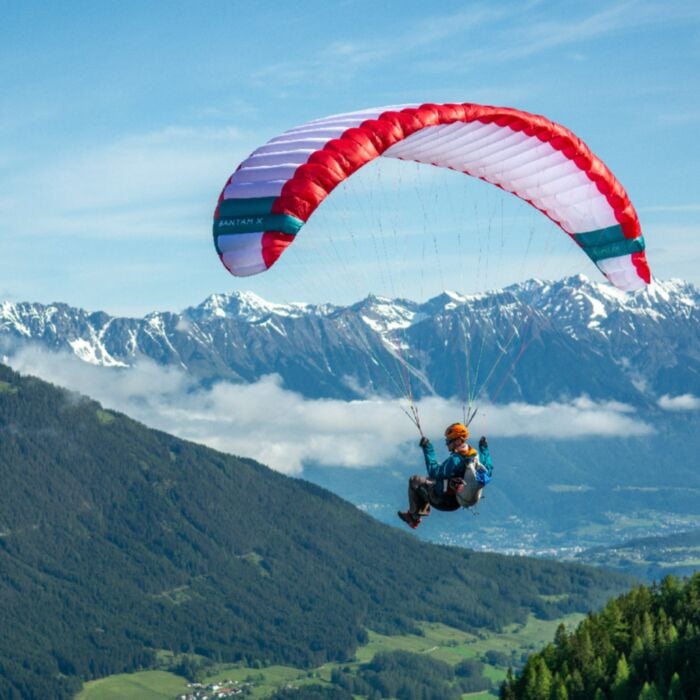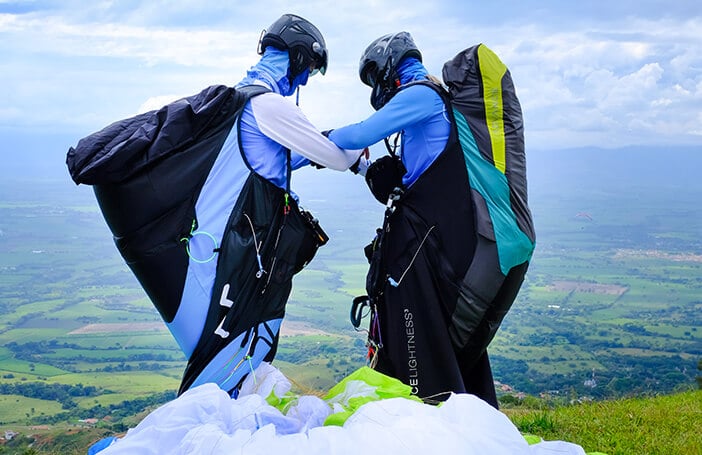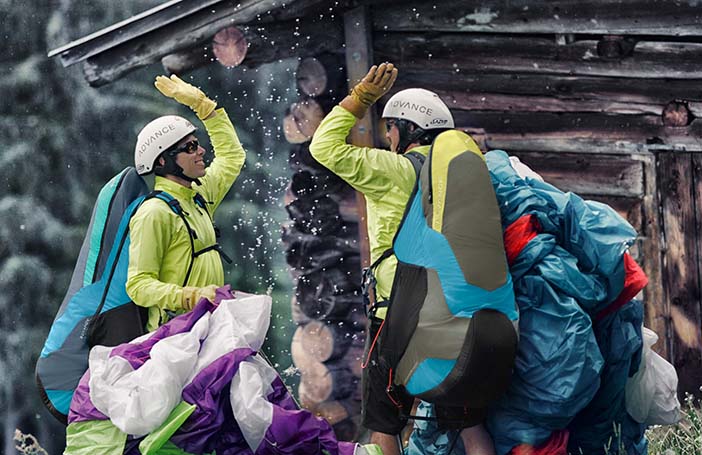Technical data
| Size |
11 |
| Load test (max load) |
kg |
90 |
| Distance pilot – canopy |
m |
3.2 |
| Flat area |
m² |
13.10 |
| Projected area |
m² |
11.0 |
| Flat aspect ratio |
4.5 |
| Projected aspect ratio |
3.2 |
| Flat span |
m |
7.67 |
| Projected span |
m |
5.9 |
| Number of cells |
33 |
| Total line length |
m |
130 |
| Max. chord |
m |
2.1 |
| Min. chord |
m |
0.44 |
| Weight |
kg |
1.5 |
Colour
One colour: Red

Package
- Mini stuff sack
- Holding pins
- Simple flag
- Repair kit
- Manual
Optional extras (Related products)
- Standard 12mm Kevlar Risers
- Backpack
- Nova Concertina Bag Mini
- Speed system

BANTAM X - Launch anywhere
The ultra-lightweight mountain glider brings exceptional features due to its radical design. Because its construction is clearly different from the BANTAM 2, Nova have not classified it as a smaller size of the BANTAM 2 but have given it a new name extension.
The key features of the BANTAM X include its extremely short lines (3.2 metres from the pilot to the canopy), its exceptional flight stability, and its very good flare behavior. The BANTAM X is especially aimed at mountain athletes who favor exposed launch sites.
Radical design approach
Both BANTAM 1 and BANTAM 2 are known for their short lines. For both, the distance from the main suspension to the canopy is only 4.3 metres (in size 12). In developing the BANTAM X, further reducing the line length was a top priority. Through many simulation series, Nova managed to reduce the lines to an impressive 3.2 metres and an 11 m² projected area – with only minor compromises in glide performance.
Why such short lines?
In alpine terrain, the challenge is often to find enough space to lay out and inflate the wing. The shorter the lines, the less space is required and the lower the risk of lines snagging on rocky ground. When laying out the BANTAM X for launch, the pilot stands just over a meter from the trailing edge with taut lines. Except for the brake lines, hardly any line touches the ground. “Throw & Go”-take offs are easier than with any other wing, making it a logical and effective launch method in some wind. The BANTAM X excels in any launch situation and significantly expands the range of possible take offs.
How does the BANTAM X fly?
In flight, the stability is noticeable. Especially the roll stability is exceptionally high, allowing the BANTAM X to glide track-stably and steadily through turbulent air. The response to brake inputs is much more dampened than with the BANTAM 2 (and BANTAM 1). So, if effortless barrel rolls are more important to you than exposed launch sites, Nova recommend the BANTAM 2. During landing, the BANTAM X is easy to handle and stands out with an excellent flare. The stabilo gets so close to the ground during landing that the BANTAM X even benefits slightly from the ground effect. The glide performance is on par with the BANTAM 1, allowing for long glides, with high speed enabling efficient gliding even in headwinds.
Why doesn’t the BANTAM X have a certification?
A wing with an 11 m² projected area is generally on the edge of what can be certified as EN-D. Often, certification is only possible with adapted (e.g., very slow) trim. The extremely short lines of the BANTAM X would have been an additional handicap, especially during the exit from a full stall, which is why Nova decided against the certification process.
What requirements does the BANTAM X place on the pilot?
Despite its high damping, the BANTAM X requires a high level of piloting skill given its small area (11 m² projected). Essentially, Nova classify the requirements as similar to those of the BANTAM 2 with the same respective wing loading.

Quote from...
The BANTAM X is unlike any wing I have flown before. It is very track-stable in flight and I have the feeling that I have more wing area above me than is actually the case. Of course, the super-short lines make it very easy to launch in any terrain. And this simplicity continues through to landing, where the wing flares incredibly well for its small size, which is a safety plus in less than ideal conditions. Last but not least: Stabi-touches are child's play thanks to the short lines.
— Aaron Durogati, Nova team pilot
Materials
| Leading edge: |
Dominico 10D, 26 g/m², nitinol rods |
| Top surface: |
Dominico 10D, 26 g/m² |
| Lower surface: |
Dominico 10D, 26 g/m² |
| Profile ribs (suspended): |
Skytex 27 hard 27 g/m² |
| Profile ribs (unsuspended): |
Skytex 27 hard 27 g/m² |
| Main lines: |
Liros PPSLS 191 / TSL 140 |
| Gallery lines: |
Edelrid U-8000 / PPSLS 65 |
| Brake lines: |
7850-240 / PPSLS 65 |
| Light Risers: |
Kevlar 7 mm |
Nova service info
Read Nova service info here.
Nova product registration
Register your Nova product here.








